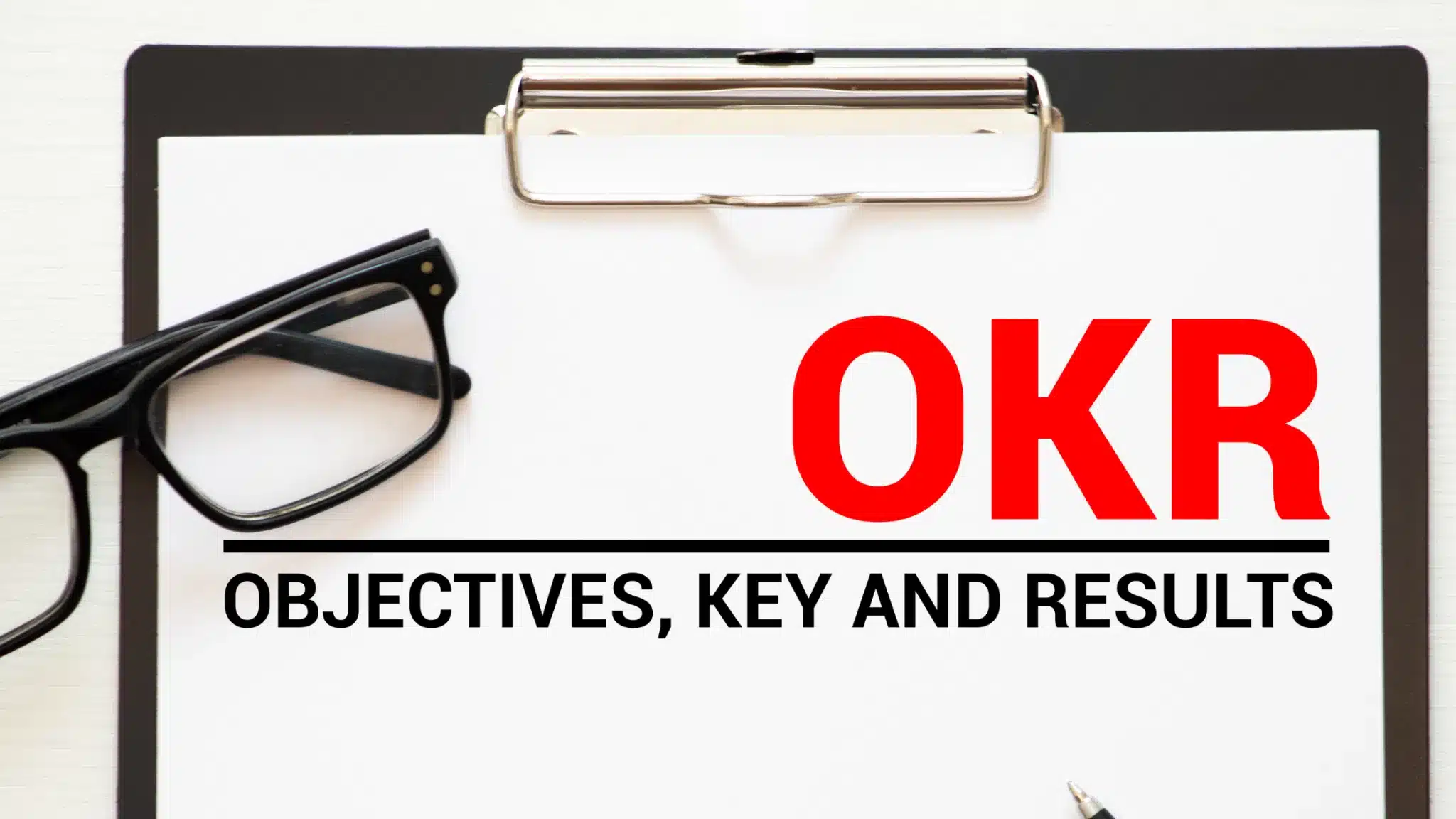OKRs help the leading companies to get a bird’s-eye view on their larger objectives and streamline their operating system at all levels.
Top companies like Google, Amazon have well-crafted OKRs to empower their teams and promote their hypergrowth. Not every company that decides to implement OKRs succeeds in doing so. It is important to analyze and understand why OKRs don’t work.
OKRs are simple but require certain key aspects that need to be considered for successful implementation.
OKRs don’t work and fail in some companies; there is no practice to vocalize the resources or requirements to accomplish meaningful outcomes.
Lack of a strong use case or data-driven approach can lead to challenges in drafting realistic OKRs.Another key challenge that makes OKR fail is the resistance to adopting a new system at any level in the organization.
““OKRs are a shared language for execution. They clarify expectations: What do we need to get done (and fast), and who’s working on it? They keep employees aligned, vertically and horizontally.”
-John Doerr in his book “Measure what matters”.
Here are some reasons why OKRs don’t work and fail at an organizational level and tips to ensure successful implementation of OKRs.
OKR Software - Used by 500+ Companies
Transform your managers into leaders through personalized coaching, bite-size learnings and make it super easy for them to have meaningful 1:1s, check-ins, and align goals(OKRs).
OKR Software - Rated 4.8 on G2
Empower your managers to be a better leader with essential performance tools & personalized coaching support.
Why OKRs don’t work and fail?
OKRs are not just things to-do lists but common goals that can drive performance. They help employees have a clearer idea of achieving their day-to-day targets regularly and efficiently and to have collective and concentrated efforts towards common goals. Let us analyze some crucial reasons which lead to OKRs’ failure in implementation.
1 Lack of Follow up on OKRs

The crux of the OKRs implementation is not just to implement but also to have regular follow-up sessions and check-ins with the team. No matter how impressive the OKRs system is, it will lead to nowhere if you get distracted and do not follow up.
Weekly or fortnightly discussions, corrective measures can help managers keep a tab on the implementation while keeping the team-oriented towards their OKRs.
2 Lack of data-driven decision making culture
Creating vague or ambiguous goals can be detrimental to OKRs culture. Goals that are just qualitative but can not be quantified are a red flag while implementing them.
The primary purpose of OKRs is to create clearly defined OKRs goals and bring the company together to work on them.
3 No Leadership Commitment
OKRs work only when everyone from the top gets involved in the system. The team has to align from top to bottom. It will be challenging to perform.
The top-level can’t just design OKRs and implement them and then forget about it. They have to lead by example in aligning the OKR goals using a realistic and transparent approach.
4 Clarity with OKRs.

OKRs as a system will need adequate time to understand and apply. The central part is in the application of OKRs and not just in creating them.
And all team members will need adequate time to understand their role here. The priority for every company is to have open discussions, workshops, and regular meetings to help team members learn OKRs well.
OKR Software - Used by 500+ Companies
Transform your managers into leaders through personalized coaching, bite-size learnings and make it super easy for them to have meaningful 1:1s, check-ins, and align goals(OKRs).
OKR Software - Rated 4.8 on G2
Empower your managers to be a better leader with essential performance tools & personalized coaching support.
5 Implementing OKRs in the entire company.
You mustn’t try and implement OKRs for the entire organization at the word go. It may overwhelm you and your employees.
Running a pilot project with your best-performing team could be the best way to start with implementing the OKRs system. In the process, you will get an opportunity to learn, adapt and find probable pitfalls sooner.
6 OKRs cannot be benchmarked as performance evaluation.
OKRs are not meant to be used as a traditional performance evaluation tool. It is a continuous performance management system with regular check-ins. OKRs are real-time and every day, not as once a year or once every quarter exercise.
7 Lack of proper tools

OKRs need constant updates and follow-ups, which is only possible when you have tools that are accessible and easy to use for all team members. Using a spreadsheet is a traditional method of updating the OKRs system, but it is not foolproof.
It is almost a manual reporting system, which can lead to a lag.
Having proper software to manage OKRs is the best way to get your team to achieve all the goals in a time-bound fashion.
8 Setting goals that are far away.
Many organizations set goals for long-running projects which are far off. Hence the objective will always be to achieve the net result instead of delivering vital day-to-day results.
The best way to deal with this is by breaking these long-term goals into shorter-term objects based on the OKRs system.
9 Too many Objectives
Companies often mistake setting more than five OKRs in a period which may create a lack of focus. Focusing on a member’s day-to-day tasks and making them a part of the OKRs system will not help either.
OKR Software - Used by 500+ Companies
Transform your managers into leaders through personalized coaching, bite-size learnings and make it super easy for them to have meaningful 1:1s, check-ins, and align goals(OKRs).
OKR Software - Rated 4.8 on G2
Empower your managers to be a better leader with essential performance tools & personalized coaching support.
How to Ensure Successful Implementation of OKRs?
Now that you have clarity on why OKRs don’t work and fail, let us look at scenarios about the successful implementation of the OKRs system.
1 Get Buy-in from Leadership –
Having dynamic and active leadership at the top is probably the best way to make sure to implement OKRs in an aligned fashion. Make sure that executive managers are dedicated to setting clear goals and values and a bottom-up approach.
2 Start with a pilot with a high-performing team.
Instead of implementing OKRs for the entire organization, it would be much better to implement them with your high-performance team. And observe their progress with them.
Initially, it won’t be a smooth sail for them, but you can learn from the mistakes made here.
3 Educate teams on OKRs.

The OKRs process is half the battle won even before starting the implementation process with trained and aware teams. You can show them how their contribution matters and how it will impact the overall goal achievement process of the organization.
OKR Software - Used by 500+ Companies
Transform your managers into leaders through personalized coaching, bite-size learnings and make it super easy for them to have meaningful 1:1s, check-ins, and align goals(OKRs).
OKR Software - Rated 4.8 on G2
Empower your managers to be a better leader with essential performance tools & personalized coaching support.
4 Use OKR software, not spreadsheets, to track OKRs.
The right tool can make or break your implementation of the OKRs system. It doesn’t matter if you are a small team or a large one. Having software to create and implement your OKRs process can make it more open, accessible, and achievable for all.
5 Build a team of OKR champions

A team of OKRs champions can help the organization successfully rollout, adapt, and use OKRs smartly for all. Having them from various groups and the department will help you understand how you and other team members need to improve.
6 Seek External Help
Sometimes seeking external help can be the most important way to understand what is lacking in your OKRs system or implementation process.
This help can be availing the services of a consultant or an OKRs expert who can study your organization’s culture and help you create customized OKRs to suit your organization’s style.
7 Don’t link them with performance evaluation.
OKRs are not performance evaluation tools. As we saw earlier, they are real-time goal systems that help your organization achieve all the goals and more.
Evaluating every member’s performance based on the OKRs system will defeat the purpose for which OKRs works.
OKR vs Balanced Scorecard and OKR vs Smart Goal: What is the Difference?
8 Evaluate what’s working and what’s not and iterate t
OKRs need regular evaluation focusing more so on what works and what doesn’t. Without this, the organization will reach a stagnation point.
After realizing what is not working, changing or modifying the same is as important as identifying it. The iterative process can only help you create better OKRs and implement them more smoothly.
Conclusion
It is essential to remember that implementing OKRs during the initial phases could be chaotic and messy. But giving up is not a good sign for any organization and a sure-shot reason as why OKRs don’t work and fail.
Therefore it is essential to keep iterating, keep trying and keep getting better at the end of every OKRs cycle to see its actual impact on the organization.







